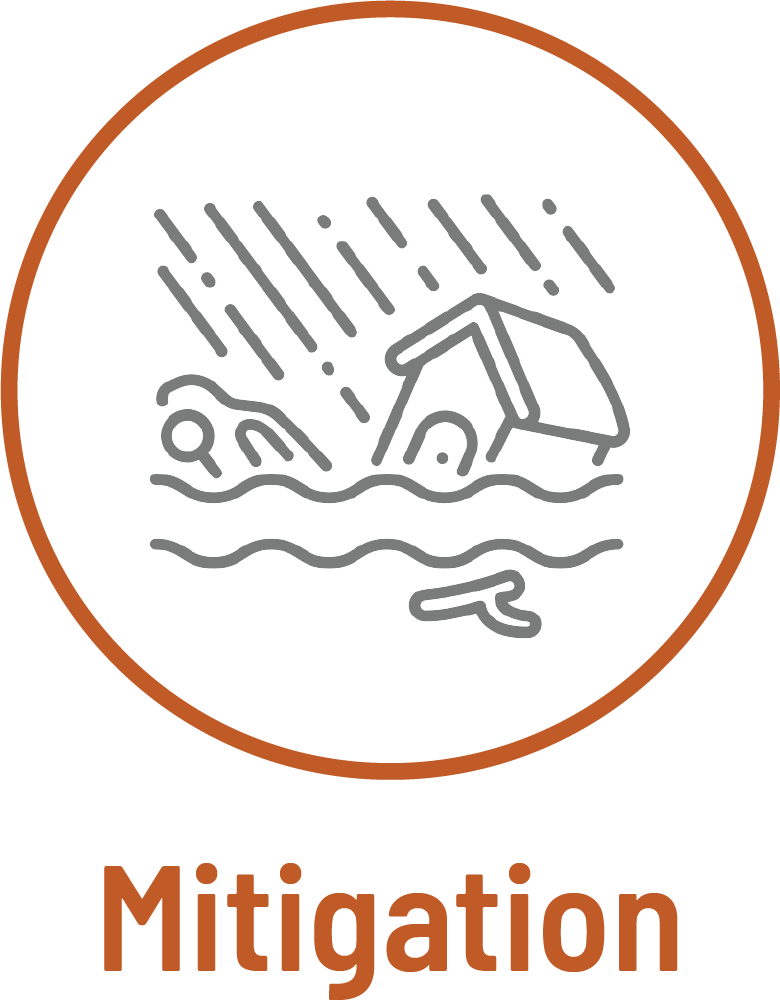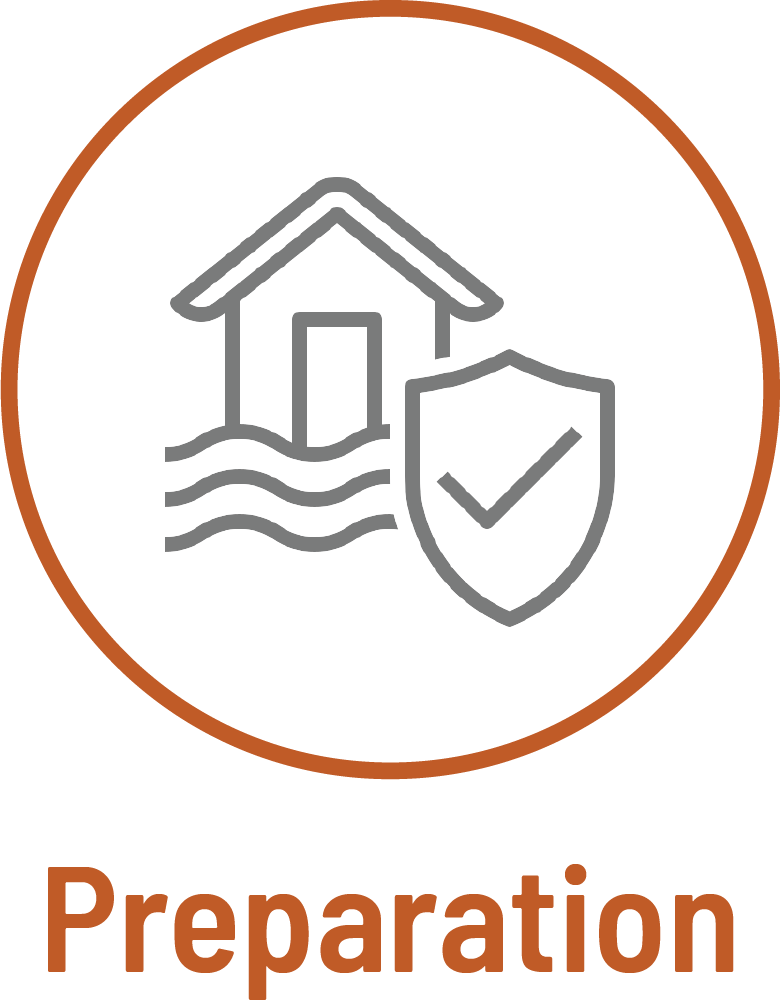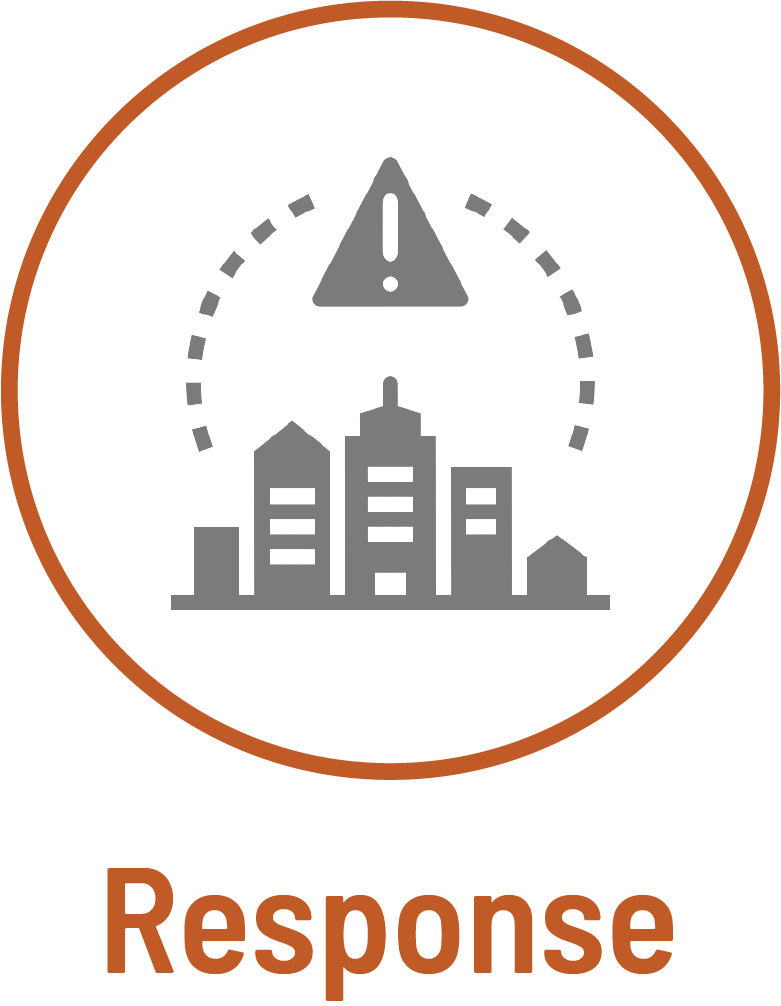How Small Business Owners Can Recover After Floods
Recovery after disaster
Response and recovery efforts involve businesses and residents within a community trading
services and information. Examples can include:
- Rival pharmacies from the community coming to each other’s aid and sharing suppliers and
storefronts. - Recruiting family and friends to assist with relocation needs and additional tasks to relieve
employee fatigue. - Forming new relationships with local media to raise attention to the reopening and
relocation of a business. - Using new technologies such as social media and video conferencing tools to boost sales
and flexibility [5].
The Small Business Disaster Recovery Framework (SBDRF)
Business recovery over time can be defined using different categories:
- Operating versus not operating – Operating because your business is producing income, or temporarily not operating because your business is rebuilding or repairing.
- Demised – Your business has stopped operation permanently because of disaster conditions.
- Survived – Your business is operating but has not achieved pre-disaster profit or debt levels.
- Recovered – Your business is operating and has restabilized to an adapted pre-disaster status.
- Resilient – Your business is operating and has outshone your business’s pre-disaster status, reducing vulnerability to future disasters [6].
When a natural disaster strikes your community, it can change your life, your family’s life, and your customers’ lives. The Small Business Disaster Recovery Framework (SBDRF) considers the interactions between:
- The recovery of the owner.
- The recovery of the owner’s family unit.
- The recovery of the business’s customers, suppliers, and community.
- The internal recovery of the business over time.
References:
[5] Stevenson JR, Chang-Richards Y, Conradson D, Wilkinson S, Vargo J, Seville E, et al. Organizational networks and recovery following the Canterbury earthquakes. Earthquake Spectra. 2014;30(1):555-575. doi: 10.1193/022013EQS041MR
[6] Marshall MI, Schrank HL. Small business disaster recovery: A research framework. Nat Hazards. 2014;72:597-616. doi: 10.1007/s11069-013-1025-z
What to Do and Top Resources
Like disaster responses, many recovery efforts are handled at a local level, so if a disaster happens, please contact your local government and nonprofit organizations to help with your recovery. Additionally, many of the planning resources provided in this guide can also be useful during the recovery phase of a flood or hurricane, and can help you recuperate and become resilient against future natural disasters. These links are the top three most useful resources specific to disaster recovery:
1. SBA’s Disaster Loan Assistance offers low interest loans to business owners, including Business Physical Disaster Loans and Economic Injury Disaster Loans.
2. SCORE provides many resources for small business owners to survive, recover, and thrive after a disaster, including their Small Business Resilience Hub, Remote Mentoring, their Business Learning Center, and a variety of Workshops.
3. The Department of Homeland Security provides a list of Other Recovery Help for businesses and communities, including Assistance for Small Businesses from the U.S. Department of the Treasury. The U.S. Department of the Treasury also offers a list of Small Business Programs.
Recovering as a Small Rural Business
Recovery services can help small businesses in rural communities become resilient against future natural disasters. These links are useful resources specific for rural communities:
-
- Rural Development Disaster Assistance helps small rural businesses affected by natural disasters.
- The Natural Resources Conservation Service (NRCS) offers disaster recovery assistance to agricultural communities, such as the Emergency Watershed Protection (EWP) Program.
- The Farm Service Agency (FSA) provides disaster assistance programs to support farmers, ranchers, and rural communities that have been impacted by natural disasters, such as the Livestock Indemnity Program (LIP) and the Emergency Conservation Program (ECP).
Contact us
The Technology & Information Policy Institute main office is in the Jesse H. Jones Communication Center, Building A. We are part of the Moody College of Communication.
Find Us
2504 Whitis Ave.
CMA 5.102
Austin, TX 78712
Phone
512-471-5826
Social
Twitter: @texastipi
Facebook: @texastipi



